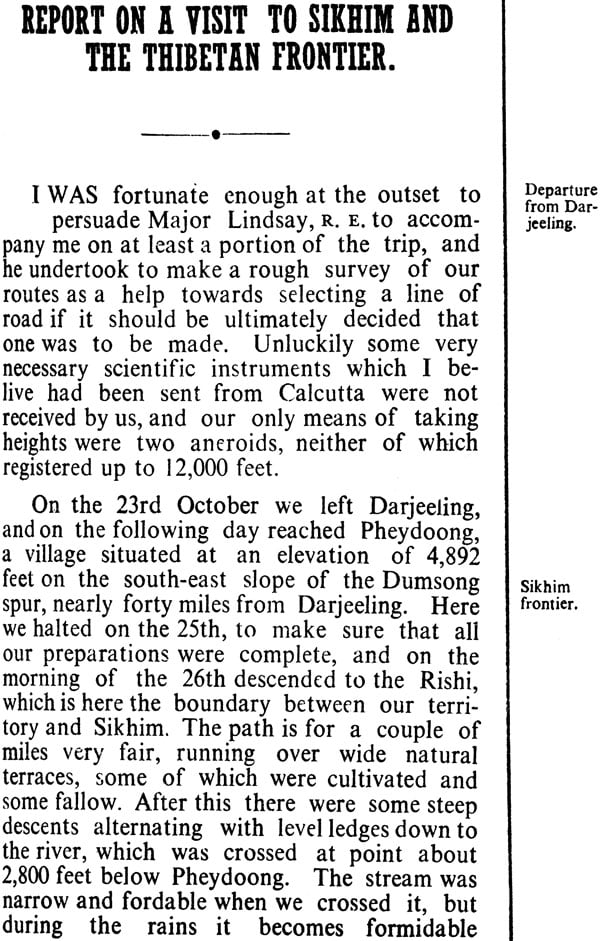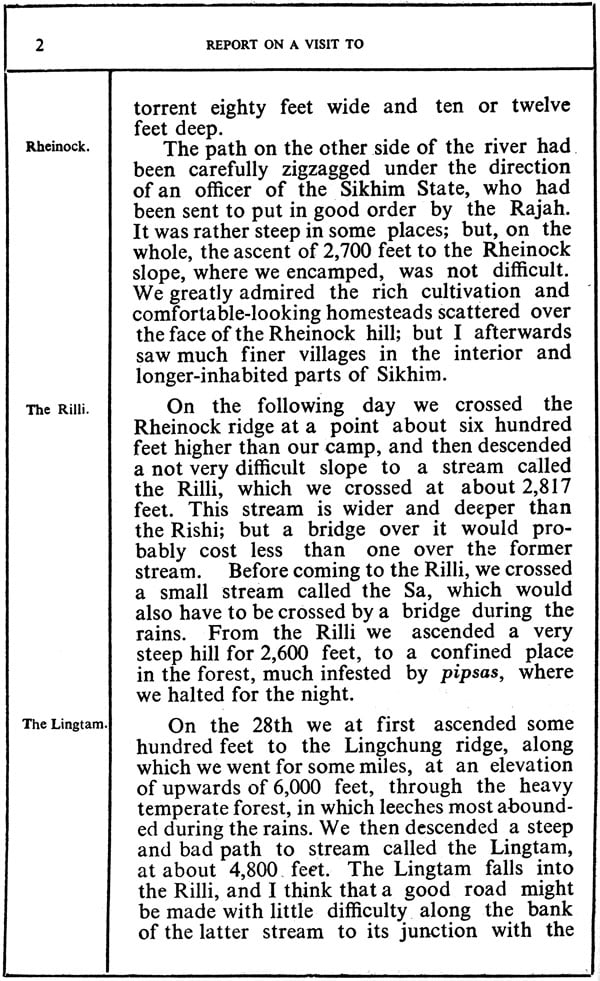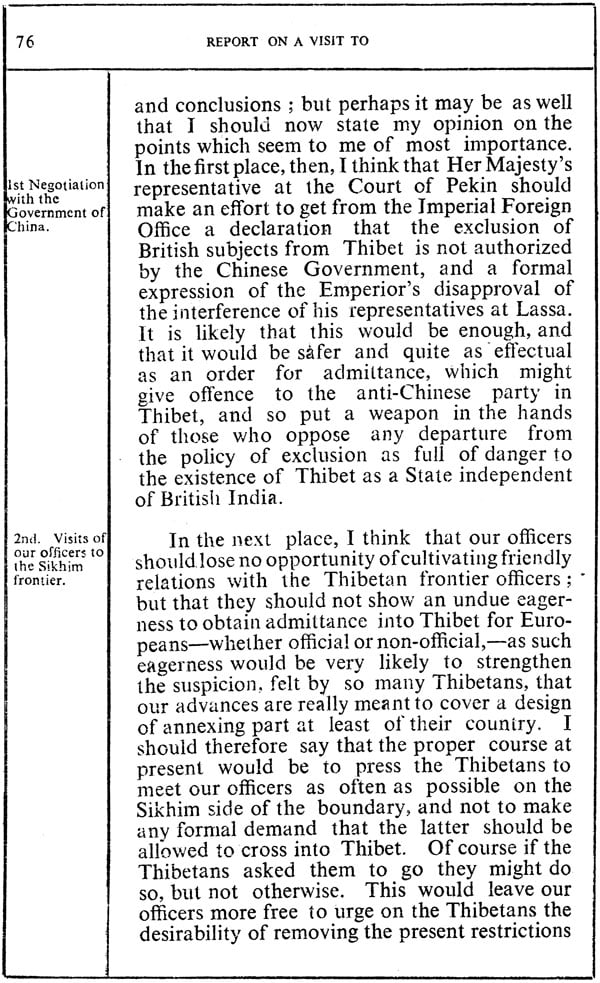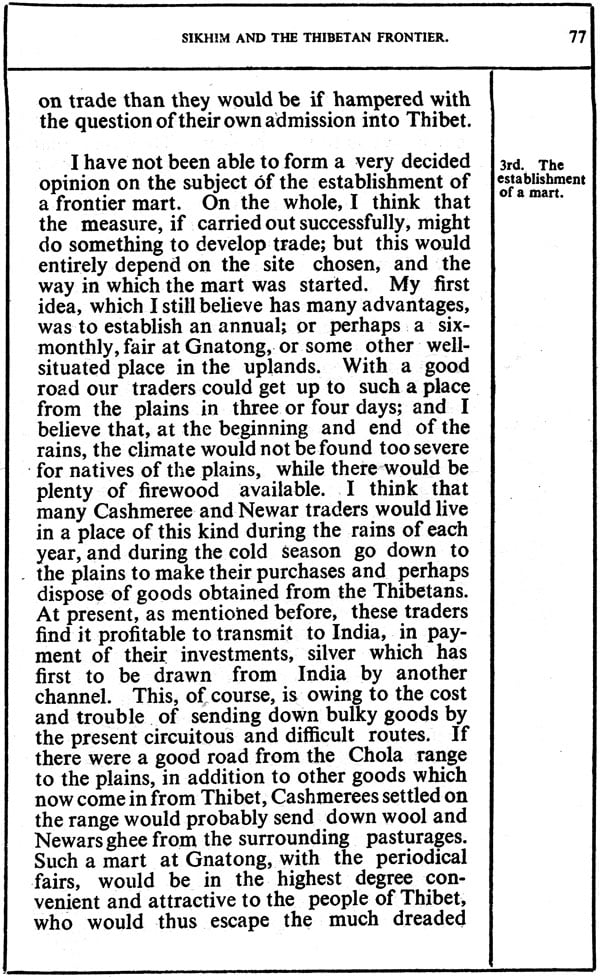
Sikhim and the Thibetan Frontier
Book Specification
| Item Code: | IDI974 |
| Author: | J. Ware Edgar |
| Publisher: | Pilgrims Publishing |
| Language: | English |
| Edition: | 2005 |
| ISBN: | 9788177693287 |
| Pages: | 93 (Black & White Illus: 8) |
| Cover: | Paperback |
| Other Details | 9.0" X 6.0" |
| Weight | 200 gm |
Book Description
Back of the Book:
Northern Sikkim and Tibet remain to this day lands restricted of access and are little known. Often enveloped in mist and cloud, these frontier regions remain at the forefront of international speculation. For this is the border between two giant powers, India and China. In 1873 John Ware Edgar travelled across investigate the opening of trade between British India and Tibet through Sikkim.
Thwarted by the Tibetan jongpens-the local rulers-and unable to cross the frontier, the author's journey and observations nonetheless provide us with a clear insight into conditions prevailing at the time. Today, more than a hundred years later, neither trade nor tourism is flourishing in this region.
Following the publication written by early visitors to Tibet and the northeastern Himalayas, such as Bogle, Turner, Manning, this book serves to add further to the picture that is portrayed of this fascinating region.
The borders of Sikkim and Tibet are closed. Neither international trade nor a flow of outside travellers have penetrated this border region since the 1950s. The subject matte of this book is primarily a journey, but also the investigation into ways of opening trade between British India, Sikkim and Tibet. That was in 1873. Tibetan intransigence or Chinese political maneuverings kept the border closed to all but a few.
European goods were normally imported into Tibet by Nepalese and Kashmiri trades using the western routes via Ladakh. The question of trade was as much to do with who controlled Tibet rather than any physical obstacle. These there were aplenty, but building a road and bridges across the mountain passes of eastern Sikkim was, even a hundred years ago, not the main issue. The internal struggle of the Tibetans, and their periodic oppressors, the Chinese, was a game that played out with tragic consequences many years after the period of this book.
Following Bogle and Turner who visited Tibet earlier with aims of opening trade, Edgar's visit has similar aims, but little progress occurred. Edgar's subtle and persuasive methods may well have helped in the longer term.
"Instead of wine I gave them tea, without milk or sugar.....It was Darjeeling, and they agreed, I think sincerely, that tea of such quality could not be bought at Lhasa, and that it was superior to any imported from China"
In the early part of the twentieth century this changed with the opening of trade marts in both Yatung and Gyangtse. David Macdonald and Charles Bell did much to promote friendly and cordial relations between the Tibetans under the 13th Dalai Lama and with British India. In the 1920s several of the Mount Everest expeditions passed by way of the Chumbi valley from Darjeeling, Sikkim into Tibet. It was perhaps the golden age of Anglo-Tibetan relations.
By 1950, following passive policies towards Chinese aggression in Tibet, the sphere of influence shifted in China's favour. Tibet was doomed to become a vassal state, its traditions overrun, devoured by the Chinese industrial machine. Today the fruits of the early trade marts have been lost. Sikkim and the frontier of Tibet remain at the crossroads of cultures, still as closed as ever they were
John Ware Edgar has kept a meticulous record, a record to serve us well, a lesson from history to make us aware of how major international events are often fashioned from early inconsequential tidings.
| 1. | Do Mani (Stones of Prayers) | 16 |
| 2. | Group of Chaits | 24 |
| 3. | Sikhim Peasants House | 48 |
| 4. | The Raja's House at Toomlong | 56 |
| 5. | Pemiongchi Chapel at Tassiding | 66 |
| 6. | North Chapel at Tassiding | 70 |
| 7. | View of Doorway at Pemiongchi Monastery | 74 |
| 8. | Camp at Pemiongch | 78 |









